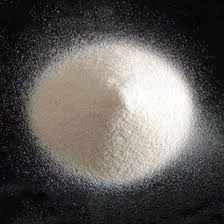
Aug . 17, 2024 13:33 Back to list
Properties and Applications of Hydroxyethyl Cellulose in Various Industries
Understanding Hydroxyethyl Cellulose Properties and Applications
Hydroxyethyl cellulose (HEC) is a non-ionic cellulose ether that has garnered significant attention in various industries due to its unique properties and versatile applications. Derived from natural cellulose, HEC is produced through the etherification of cellulose with ethylene oxide. This modification enhances the solubility of cellulose and imparts distinctive characteristics that make it suitable for a wide range of uses, particularly in the fields of pharmaceuticals, cosmetics, construction, and food industries.
One of the primary attributes of hydroxyethyl cellulose is its exceptional water solubility. Unlike native cellulose, which is insoluble in water, HEC can dissolve easily in cold or hot water, forming a clear and viscous solution. This property makes it an ideal thickening agent and stabilizer, allowing it to be utilized in products where a controlled viscosity is crucial. For instance, in the pharmaceutical realm, HEC is often employed as an excipient in drug formulations, enhancing the viscosity of suspensions and ensuring uniformity in the distribution of active pharmaceutical ingredients.
In the cosmetic industry, HEC is a popular ingredient in skincare products, shampoos, and conditioners. Its ability to retain moisture and provide a smooth texture enhances the sensory experience of products. HEC also acts as a film-forming agent, providing a protective barrier on the skin and hair, which helps in preventing moisture loss and improving overall appearance. Moreover, its non-ionic nature minimizes the risk of irritation, making it suitable for sensitive skin formulations.
Another significant application of hydroxyethyl cellulose is in the construction industry, particularly in the formulation of cementitious materials and mortars
. When added to these mixtures, HEC enhances water retention, workability, and open time, allowing for better processing and application. The use of HEC in cement-based products can also improve adhesion and reduce cracking, contributing to the overall durability and performance of the materials.hydroxyethyl cellulose

In the food industry, HEC serves as a thickening and gelling agent, often used in sauces, dressings, and baked goods. Its ability to modify texture and stability without altering taste makes HEC a valuable ingredient in various formulations. As consumers increasingly seek clean-label products, the natural origin of HEC from cellulose aligns with the growing demand for ingredients perceived as safe and environmentally friendly.
In addition to its application-based benefits, hydroxyethyl cellulose is also noteworthy for its biodegradability and non-toxic nature. As environmental concerns continue to shape consumer preferences and regulatory frameworks, HEC presents a sustainable choice for formulators aiming to reduce their ecological footprint. The use of HEC not only supports product efficacy but also contributes to responsible sourcing and usage in formulations.
Despite its many advantages, the properties of hydroxyethyl cellulose can vary significantly based on factors such as molecular weight and substitution degree. These characteristics influence performance in specific applications, necessitating careful selection based on end-use requirements. Manufacturers frequently provide different grades of HEC, allowing formulators to tailor their products to meet specific functional and performance criteria.
In conclusion, hydroxyethyl cellulose is a multifaceted ingredient with extensive applications across various industries. Its unique properties, including water solubility, thickening ability, and film-forming attributes, make it an indispensable component in pharmaceuticals, cosmetics, construction, and food products. As the demand for natural and biodegradable ingredients rises, HEC stands out as a sustainable solution that meets both functional and environmental needs. As research and innovation continue, the potential for hydroxyethyl cellulose in new applications and formulations will likely expand, solidifying its role in modern manufacturing and product design.
-
Unlocking the Benefits of HPMC Products: A Gateway to Versatile Applications
NewsAug.07,2025
-
Unleashing the Potential of HPMC Ashland: A Comprehensive Look
NewsAug.07,2025
-
Tile Bonding Cellulose: The Key to Superior Adhesion and Durability
NewsAug.07,2025
-
Hydroxypropyl Methylcellulose Powder: The Versatile Component in Modern Pharmaceuticals
NewsAug.07,2025
-
Hydroxyethyl Cellulose: The Versatile Solution for Various Industries
NewsAug.07,2025
-
Hydroxyethyl Cellulose (HEC): The Versatile Polymer for Various Applications
NewsAug.07,2025







